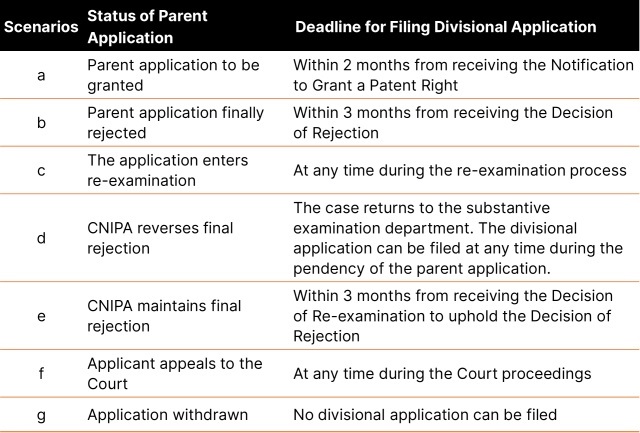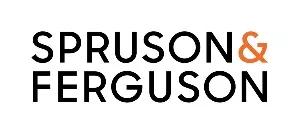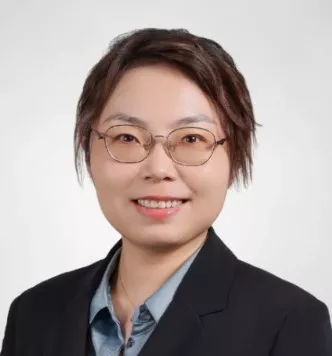- with readers working within the Pharmaceuticals & BioTech and Retail & Leisure industries
- within Privacy topic(s)
- with Senior Company Executives, HR and Finance and Tax Executives
Chinese divisional practice is known for its unique timing requirements, prerequisites for filing a divisional, and strict procedural deadlines. For patent holders looking to secure their rights in China, it is crucial to have an understanding of these differences.
In China, filing a divisional application is routinely initiated by applicant, and commonly adopted to provide strategic flexibility to patent protection.
However, the parameters differ significantly from the requirements in the US and EU. To assist patent owners in understanding these differences, we provide a brief introduction to the related rules and practice tips.
Division application timeline in China
A divisional application can be filed at any time during the pendency of the parent application. Typical scenarios are summarised in the below table.

Typical Divisional Application scenarios
Types of divisional applications
The divisional application must be the same type as the parent application (invention vs. utility model). A utility model application cannot be derived from an invention patent application, nor can an invention application stem from a utility model.
Scope of a divisional application
A divisional application must be strictly based on the parent application – that is, no new matters can be introduced.
Claims for a divisional application
There is no restriction on the number and contents for divisional claims as long as they can be determined from the original disclosures of the parent application. The applicant may select any embodiments recorded in the parent application or just use the original claims as a placeholder for the divisional application.
Prerequisite of subsequent divisional applications
To file a further divisional application based on an existing divisional application, a unity of invention objection must be raised against the existing divisional application by the examiner.
Practice tips:
- include claims that may not share unity in the divisional application to provoke a unity objection for further divisional application. However, whether to raise a unity objection is under the discretion of the examiner.
- include all the desired embodiments in one divisional application or separate the embodiments into several parallel divisional applications at the same time.
Double patenting
To comply with Article 9 of the Chinese Patent Law, which prohibits granting multiple patents for the same invention, applicants should avoid double patenting by ensuring claims in the parent and divisional applications are not identical or substantially identical. The assessment of double patenting focuses on whether the technical solutions defined by the claims are identical or essentially identical.
Typical examples of claims without double patenting issues:
Example 1: broad scope vs narrow scope
- Parent claim 1: A composition comprising antigen-binding substances for treating a disease.
- Divisional claim 1: A composition comprising antibodies for treating a disease.
These two claims do not have double patenting issue although the divisional claim 1 relates to a specific species of parent claim 1.
Example 2: partially overlapped numerical ranges
- Parent claim 1: A composition comprising 20-60 wt% x substance.
- Divisional claim 1: A composition comprising 50-70 wt% x substance.
These two claims do not have double patenting issue despite partial overlap in their numerical ranges.
Practice tips: If the parent application is granted, the applicant should ensure divisional claims are not identical/substantially identical to the granted parent claims to avoid double patenting. If the parent application is pending, divisional claims can initially cover the broadest scopes and amendments can be made during prosecution to address double patenting.
Summary
The requirements for Divisional patents in China are distinct from practices in Europe, the United States or the other major jurisdictions. A better understanding of the rules and full utilisation of them are crucial to designing a comprehensive strategy that meets the desired business interests of applicants.
How we can help
Our team in Beijing and Hong Kong work closely with clients globally to identify proactive patents strategies and ensure their filing and claim strategies are tailored to maximise their rights and commercial outcomes. Reach out to the team for further information.
The content of this article is intended to provide a general guide to the subject matter. Specialist advice should be sought about your specific circumstances.



